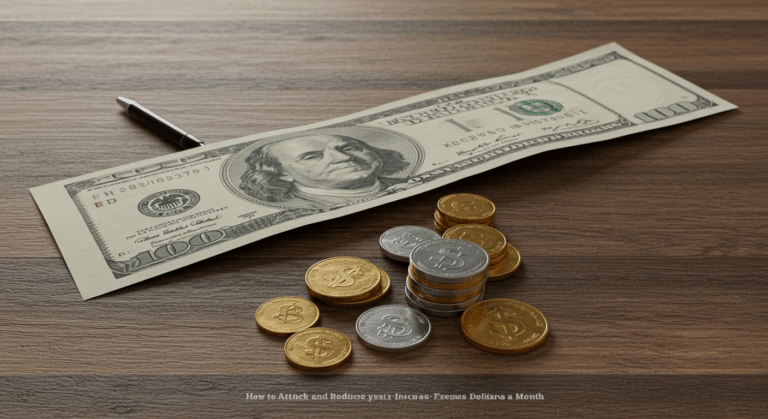What is inflation and how does this pervasive economic force silently shape your financial landscape? You’ve likely noticed prices for everyday goods and services gradually increasing over time. This phenomenon, known as inflation, impacts everything from your grocery bill to your long-term savings and investment strategies. Understanding inflation is not just for economists; it’s crucial for anyone looking to secure their financial future. This article will demystify inflation, exploring its causes, its wide-ranging effects, and, importantly, providing you with actionable insights to navigate its challenges and protect your hard-earned money.
Understanding the Basics of Inflation
At its core, inflation refers to the rate at which the general level of prices for goods and services is rising, and consequently, the purchasing power of currency is falling. Think of it this way: if the inflation rate is 2% per year, then on average, a basket of goods that costs you $100 today will cost $102 next year. Your $100 will buy less.
This decline in purchasing power means that each unit of currency buys fewer goods and services. While seemingly small year-to-year changes might not feel dramatic, compounded over time, inflation can significantly erode the value of your money. This is why understanding its mechanics is fundamental to sound personal finance management.
How is Inflation Measured?
Economists and governments use several key indicators to measure inflation. The most widely recognized is the Consumer Price Index (CPI). The CPI tracks the average change over time in the prices paid by urban consumers for a market basket of consumer goods and services. This basket includes everything from food and housing to transportation and medical care. Changes in the CPI are used to assess price changes associated with the cost of living.
Another important measure is the Producer Price Index (PPI), which tracks the average change over time in the selling prices received by domestic producers for their output. The PPI measures price changes from the perspective of the seller, not the buyer, and can often be a leading indicator of future consumer inflation, as increased production costs are typically passed on to consumers.
Other indices, such as the Personal Consumption Expenditures (PCE) Price Index, are also monitored, particularly by central banks like the Federal Reserve in the U.S., as they can provide a broader picture of inflationary pressures within the economy.

The Main Causes of Inflation
Inflation doesn’t just happen; it’s driven by various economic factors. Understanding these causes can help you anticipate potential inflationary periods. The primary drivers are generally categorized as follows:
- Demand-Pull Inflation: This occurs when there is too much money chasing too few goods. If demand for goods and services outstrips supply, producers can raise prices. This can be fueled by increased consumer confidence leading to more spending, a surge in government expenditure, or strong export demand. Essentially, when everyone wants to buy more than what’s available, prices go up.
- Cost-Push Inflation: This type of inflation arises when the costs of production increase. If businesses face higher expenses for raw materials (like oil or metals), energy, or wages, they often pass these increased costs on to consumers in the form of higher prices to maintain their profit margins. Supply chain disruptions or natural disasters affecting resource availability can also trigger cost-push inflation.
- Built-in Inflation (also known as the wage-price spiral): This is a cyclical process where rising prices lead workers to demand higher wages. To cover these higher labor costs, businesses then raise their prices further, leading to another round of wage demands. This expectation of future inflation becomes self-fulfilling.
- Expansion of the Money Supply: If a central bank increases the money supply (by printing more money or through other monetary tools) at a faster rate than the growth of real output, the value of money can decrease. With more money available but the same amount of goods and services, prices tend to rise. The management of the money supply is a key responsibility of central banks in controlling inflation.
The Effects of Inflation
Inflation has far-reaching consequences, affecting individuals, businesses, and the overall economy. While mild inflation can sometimes be seen as a sign of a growing economy, high or unpredictable inflation is generally detrimental.
One of the most immediate effects is the decreased purchasing power we’ve discussed. Your money simply doesn’t stretch as far. This particularly impacts those on fixed incomes, such as retirees, as their income doesn’t rise with prices. For savers, inflation can erode the real value of their accumulated wealth. If your savings account earns an interest rate lower than the inflation rate, you are effectively losing purchasing power over time.
Inflation also influences investment decisions. Some assets, like certain stocks, real estate, or commodities, may offer a hedge against inflation as their values can rise with increasing prices. However, other investments, such as bonds with fixed interest payments, can lose value in real terms. Crafting an investment strategy that accounts for inflation is crucial for long-term financial health. Businesses face uncertainty during inflationary periods, making it harder to plan for the future, set prices, and make investment decisions, which can slow down economic growth. Furthermore, central banks often respond to rising inflation by increasing interest rates, making borrowing more expensive for both consumers and businesses.
Types of Inflation
Inflation isn’t a one-size-fits-all phenomenon; it can manifest in different degrees of severity:
- Creeping Inflation: This is mild inflation, typically in the range of 1-3% per year. When prices rise predictably at this low rate, it may not cause significant problems and can even encourage people to buy now rather than later, stimulating economic activity.
- Walking Inflation: This occurs when prices rise moderately, usually between 3-10% annually. It’s a warning sign, as it can start to negatively impact the economy if not controlled. People may start to buy more than they need to avoid future higher prices, further fueling demand.
- Galloping Inflation: When inflation rises to 10% or more (double or triple digits per year), it’s termed galloping inflation. Money loses value quickly, and it becomes very difficult for businesses and individuals to manage their finances. Foreign investors may lose confidence in the country’s economy.
- Hyperinflation: This is an extreme and rapid form of inflation, often exceeding 50% per month. Historical examples include Germany in the 1920s or Zimbabwe in the late 2000s. Hyperinflation can lead to a total economic collapse as the currency becomes virtually worthless.
- Deflation: The opposite of inflation, deflation is a decrease in the general price level. While falling prices might sound good, deflation can be harmful, leading consumers to delay purchases in anticipation of even lower prices, reducing demand and potentially leading to economic stagnation or recession.
- Stagflation: A particularly challenging scenario, stagflation combines stagnant economic growth (high unemployment and low demand) with high inflation.
How to Protect Yourself from Inflation
While you cannot control macroeconomic forces like inflation, you can take steps to mitigate its impact on your personal finances. Being proactive is key.
Consider investing wisely. Certain asset classes have historically performed well during inflationary periods. These can include equities (stocks of companies that can pass on costs to consumers), real estate (as property values and rents may rise with inflation), and Treasury Inflation-Protected Securities (TIPS), which are government bonds indexed to inflation. Diversification across different asset types remains a fundamental strategy.
Managing debt effectively is also important. If you have fixed-rate loans (like a fixed-rate mortgage), inflation can actually work in your favor by reducing the real value of your debt over time. However, be cautious with variable-rate debt, as interest rates may rise during inflationary periods, increasing your repayment burden. Focus on reducing high-interest consumer debt.
Re-evaluate your budgeting and savings habits. Adjust your budget to account for rising prices in essential categories. When it comes to savings, aim for financial products or accounts that offer returns that can potentially outpace inflation. Explore various savings options to find what best suits your needs and risk tolerance. Actively seek to increase your income, whether through negotiating salary raises that keep pace with the cost of living or by developing new skills to enhance your earning potential. Finally, practice smart shopping habits like comparing prices, looking for discounts, and buying in bulk for non-perishable items when economically sensible.
The Role of Central Banks and Governments
Central banks and governments play a crucial role in managing inflation and maintaining price stability, which is essential for a healthy economy. Their primary tools fall under monetary and fiscal policy.
Monetary policy is enacted by the central bank (like the Federal Reserve in the U.S. or the European Central Bank). The most common tool is adjusting the benchmark interest rate. Raising interest rates makes borrowing more expensive, which can cool down demand and curb inflation. Lowering rates can stimulate borrowing and spending. Other monetary tools include quantitative easing (injecting money into the economy) or quantitative tightening (removing money), and adjusting bank reserve requirements.
Fiscal policy refers to the government’s use of spending and taxation to influence the economy. For instance, reducing government spending or increasing taxes can help reduce aggregate demand and thus lower inflationary pressures. Conversely, increased government spending or tax cuts can stimulate demand, which might be appropriate during a recession but could exacerbate inflation if the economy is already overheating. The goal is to strike a balance that promotes sustainable economic growth without letting inflation spiral out of control. For more insights on economic trends, you can visit our Economy section.
Conclusion
Inflation is a fundamental economic concept with tangible effects on your daily life and long-term financial well-being. From the price of your coffee to the value of your retirement fund, its influence is pervasive. By understanding what inflation is, what causes it, how it’s measured, and its various impacts, you are better equipped to make informed financial decisions.
Navigating an inflationary environment requires awareness and proactive strategies. While you cannot dictate economic policy, you can control your personal financial planning, including your approach to spending, saving, and investing. Staying informed and adaptable is your best defense against the eroding power of inflation, helping you to protect and grow your wealth over time. For more general financial news and insights, check our News page.
Frequently Asked Questions (FAQ)
Is all inflation bad?
Not necessarily. Mild, stable inflation (often targeted by central banks at around 2%) is generally considered normal for a growing economy. It can encourage spending and investment and reduce the real burden of debt. However, high, volatile, or unpredictable inflation can be very damaging, eroding savings, creating economic uncertainty, and disproportionately affecting those on fixed incomes.
How does inflation affect my mortgage?
If you have a fixed-rate mortgage, inflation can be somewhat beneficial to you as a borrower. While your mortgage payments remain the same, the real value of that debt decreases over time as money becomes worth less. In essence, you are repaying the loan with money that has less purchasing power than when you borrowed it. However, if you have a variable-rate mortgage, your payments could increase if interest rates rise in response to inflation.
Can I beat inflation with a standard savings account?
Often, standard savings accounts offer interest rates that are lower than the rate of inflation, especially during periods of moderate to high inflation. This means the real value of your money in such an account could be decreasing over time. To combat inflation effectively, you typically need to consider other financial products or investment vehicles that have the potential to offer returns higher than the inflation rate, though these usually come with higher risk. It’s about finding the right balance for your risk tolerance and financial goals.





